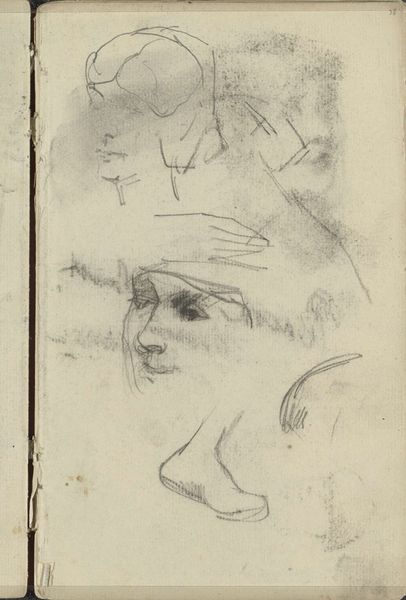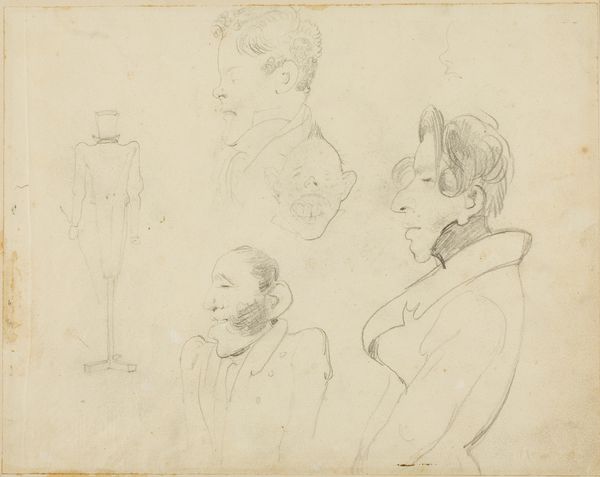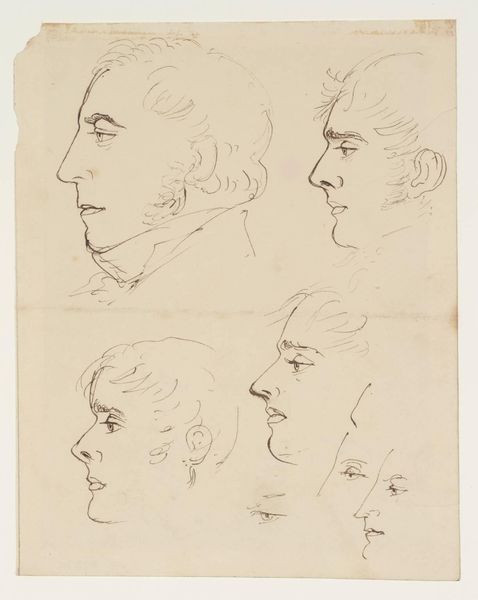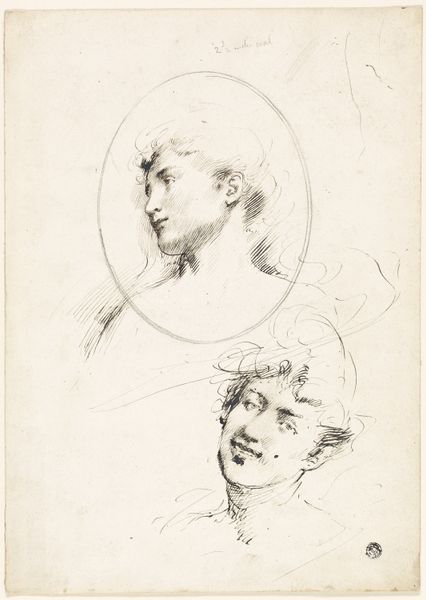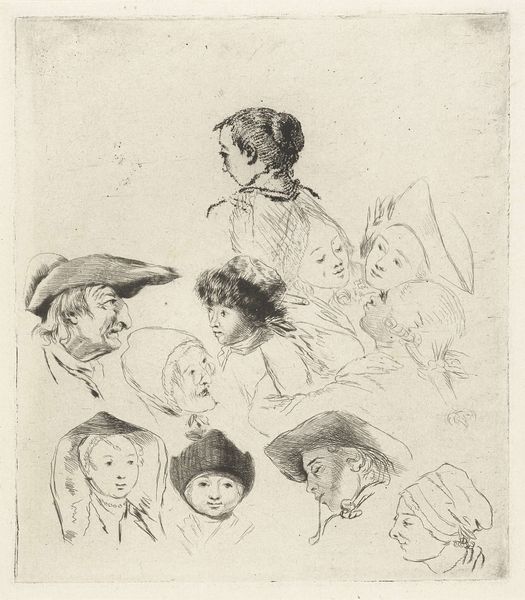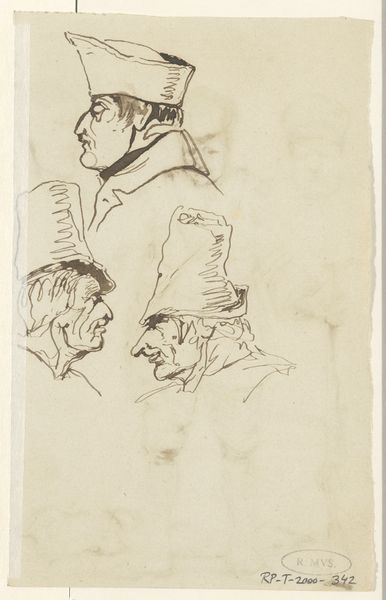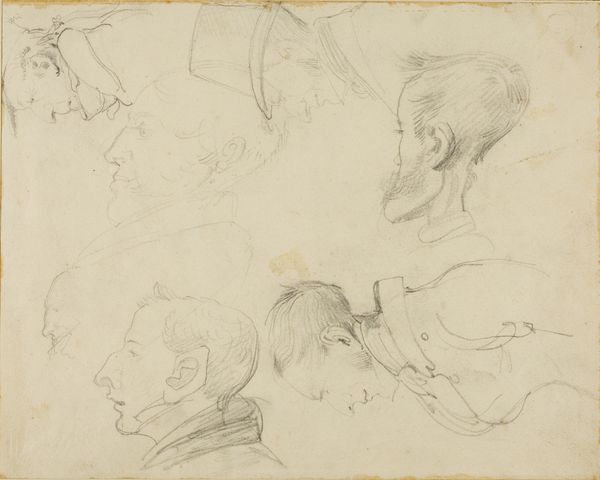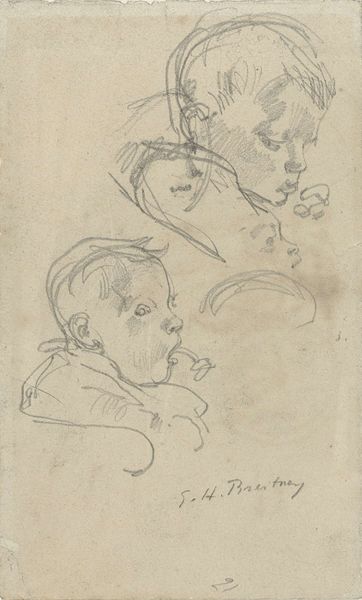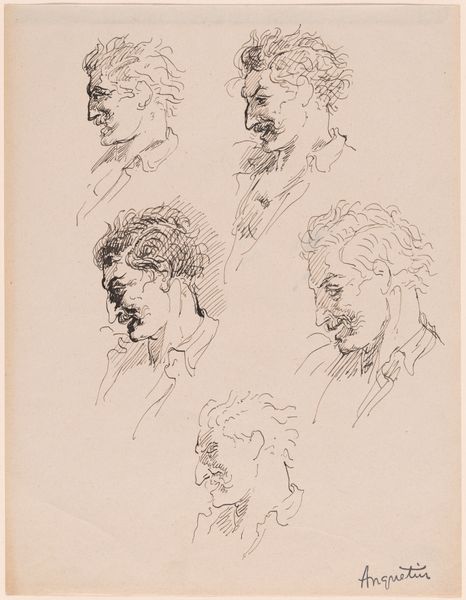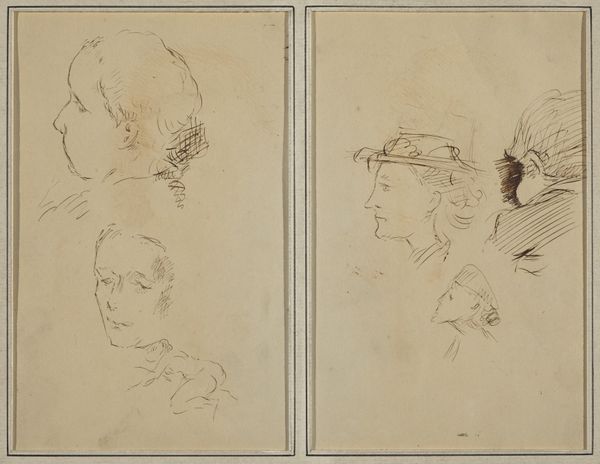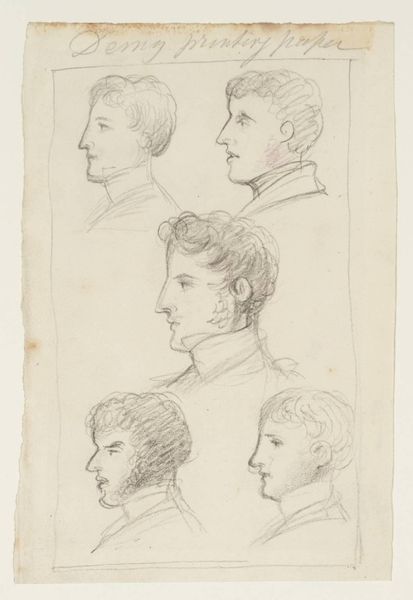
drawing, pencil
#
portrait
#
drawing
#
16_19th-century
#
pencil sketch
#
figuration
#
german
#
pencil drawing
#
romanticism
#
pencil
#
sketchbook drawing
#
portrait drawing
#
academic-art
Copyright: Public Domain
Editor: Here we have Louis Ferdinand von Rayski's "Studienblatt: Vier männliche Köpfe," a pencil drawing that looks like a page torn from a sketchbook. I'm struck by the different moods; some faces appear melancholic, others almost mischievous. What do you see in this collection of studies? Curator: What immediately grabs my attention is the social context implied by these portraits. Who were these men? Were they commissioned portraits, or studies for larger compositions? The academic art style suggests a certain class of patronage, perhaps reflecting the rising bourgeois society and its interest in portraiture. Look closely; can you discern any cues about their status through their clothing or features? Editor: The man with the moustache looks more well-to-do compared to the others with their plain clothing and less-refined features. Is this sort of grouping common for artists of the time? Curator: It was quite common. Artists often produced studies like these for several reasons. Firstly, as an exercise to master technique, but equally to create a "bank" of faces for use in future, more elaborate compositions. Secondly, collections of such drawings held practical benefits. By portraying a diversity of characters, artists demonstrated to potential patrons that they possessed skill to portray a variety of important people, to promote their public image. In effect, such portrait studies functioned as marketing material to broaden an artist's reach, and their perceived value in cultural circles. How does recognizing this social dynamic influence your understanding of the piece? Editor: It makes me think about art as a business, and the artist as a savvy professional, which I hadn't considered before. I was initially drawn to the emotional depth in the sketches. Curator: Precisely. It encourages us to look beyond the individual aesthetic appeal, and analyze the conditions that shaped art production, how art contributes to constructing social narratives, and to solidifying power structures within society. Editor: That’s a different way to think about these faces! Now, when I look at them, I can almost hear the murmur of the 19th-century salon.
Comments
No comments
Be the first to comment and join the conversation on the ultimate creative platform.

